Your Guide to Visiting the Glenstone Museum
Art, architecture and landscape come together at this fascinating indoor-outdoor museum near washington, dc., what you should know before going to glenstone.
Glenstone is located at 12100 Glen Road in Potomac, Md., roughly 40 minutes from downtown DC by car. Parking is readily available. The museum is open Thursday through Sunday from 10 a.m. to 5 p.m. Glenstone asks that its guests reserve a visit in advance online . Visits can be scheduled on the half hour from 10 a.m. to 3 p.m. Tickets are released on the first of every month for the next three months (for example, December tickets will be available on Oct. 1). If you arrive without a reservation, Glenstone will work to accommodate you, but reservations are highly recommended.
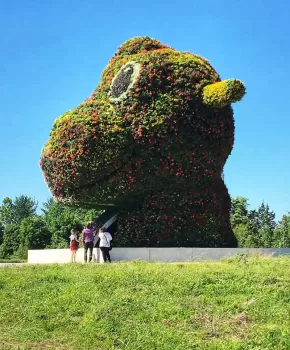
@laflaneure
Admission to the museum is always free. Due to the fragility of the works on view, all visitors to Glenstone must be 12 or older and all minors (ages 12-17) must be accompanied by an adult at all times. While photography is not allowed inside the museum, guests can take photos of the outdoor artworks for their Instagram and for personal use. Glenstone does not allow the use auxiliary lighting, selfie sticks, drones, tripods or commercial photography of any kind.
Glenstone presents a holistic experience of art, architecture and landscape, a central part of the mission of its founders, Emily and Mitch Rales. The museum features two gallery buildings, numerous outdoor sculptures and more than 230 acres of landscape in total. Make sure to wear comfortable walking shoes, as a visit to Glenstone is a journey in and of itself.
The museum also wants to provide you with a relaxing environment fit for contemplation of its thought-provoking pieces of art, hence the scheduled visits. If you’re looking to be truly immersed in both mind and body during a museum-going experience, Glenstone is the perfect fit.

What you will find at Glenstone
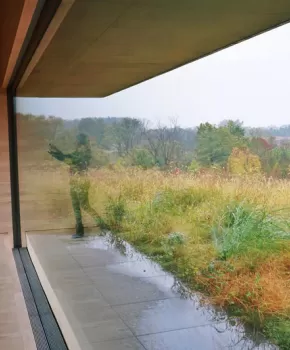
@ambarella
Glenstone initially opened in 2006 as one gallery building featuring 9,000 square feet of exhibition space overlooking a three-acre pond, with an accompanying assortment of sculptures outdoors. However, on Oct. 4, 2018, the museum unveiled its extensive additions to the public, the culmination of a 15-year process. Glenstone now features a series of indoor and outdoor spaces that showcase post-World War II artworks that will challenge visitors to think deeply while also providing a global perspective on seminal art from the past 70 years. The collection is considered one of the best in the United States.
Your experience at Glenstone begins with the Arrival Hall, a new building in which you can get a sense of the museum’s minimalist design aesthetic and peruse a gift shop filled with books that highlight and illuminate modern and abstract art.
The Pavilions are your next stop, but not before a brisk 7-minute walk on a peaceful trail. Along the way, you’ll see Jeff Koons’ The Split Rocker perched on a hill, perhaps the museum’s signature piece. This intersection of art with nature is an essential component of Glenstone.
Note that Glenstone Guides, dressed entirely in gray, will appear throughout your voyage. The Guides are there to inform, but also to listen to your interpretations of the art that you’re seeing. They’re a replacement for explanatory and lifeless diatribes you often see on walls at other museums. Glenstone is all about allowing you to slow down and interact with the art on your own terms.
As the Pavilions emerge into your view, you’ll be struck by the 204,000-square-foot building embedded into the middle of a vast field. Like something out of a Stanley Kubrick film, the Pavilions stand out as a futuristic, bright white beacon on the grounds, with stacked blocks of concrete and inset glass allowing for natural light to stream through. Although the Pavilions houses breathtaking art, the building is an artistic and architectural marvel itself.
Inside, you’ll find 50,000 square feet of exhibition space, including 13 individual spaces for art. Some will feature rotating exhibitions, while others are custom-built for the work of a particular artist, which stresses the fact that Glenstone always aims to sustain an artist’s vision when displaying his or her work. At the center of the Pavilions is an 18,000-square-foot water court, adorned by seasonally changing plant life – yet another example of art and nature intersecting.
The Pavilion’s exhibition spaces contain wonders, whether you’re observing the 65 works inside the Room 2 Installation (which includes pieces by Jackson Pollock, Mark Rothko, Alexander Calder, Andy Warhol and Barbara Kruger, among many others) or a single piece showcased on its own, like Michael Heizer’s Collapse or Robert Gober’s stunning rumination on nature, Untitled (1992) . The collection is not limited to paintings and sculptures, either: Pipilotti Rist’s Ever Is Over All video is an astonishing and captivating highlight.
There’s much more in store beyond the Pavilions. Next, let outdoor paths and trails guide you through the additional acreage at Glenstone. Along the way, you’ll see streams, meadows and forests in addition to mind-bending works such as Andy Goldsworthy’s Clay Houses (Boulder-Room-Holes) , which can be found on the Woodland Trail, Tony Smith’s Smug and Richard Serra’s Sylvester , located next to the original Glenstone Gallery.
During your extensive Glenstone excursion, hunger and thirst may strike. No worries: the museum has also added a new cafe, set into the forest and the perfect place to stop during your exploration of the property.
When observed in total, a trip to Glenstone is not simply a trip to an art museum. The expansiveness of the property and its architecture and artwork, all graced by the tranquility of nature, makes one feel that they’ve journeyed to another world altogether. Your sense of time can vanish as you are consumed by a mixture of artistic, architectural and natural beauty that you won’t find anywhere else in the Washington, DC area.
More About DC
You may also like..
6 Things to See & Do in Maryland
Visiting Smithsonian's National Zoo in Washington, DC
Things to Do This Weekend in Washington, DC
Visit the Glenstone Museum
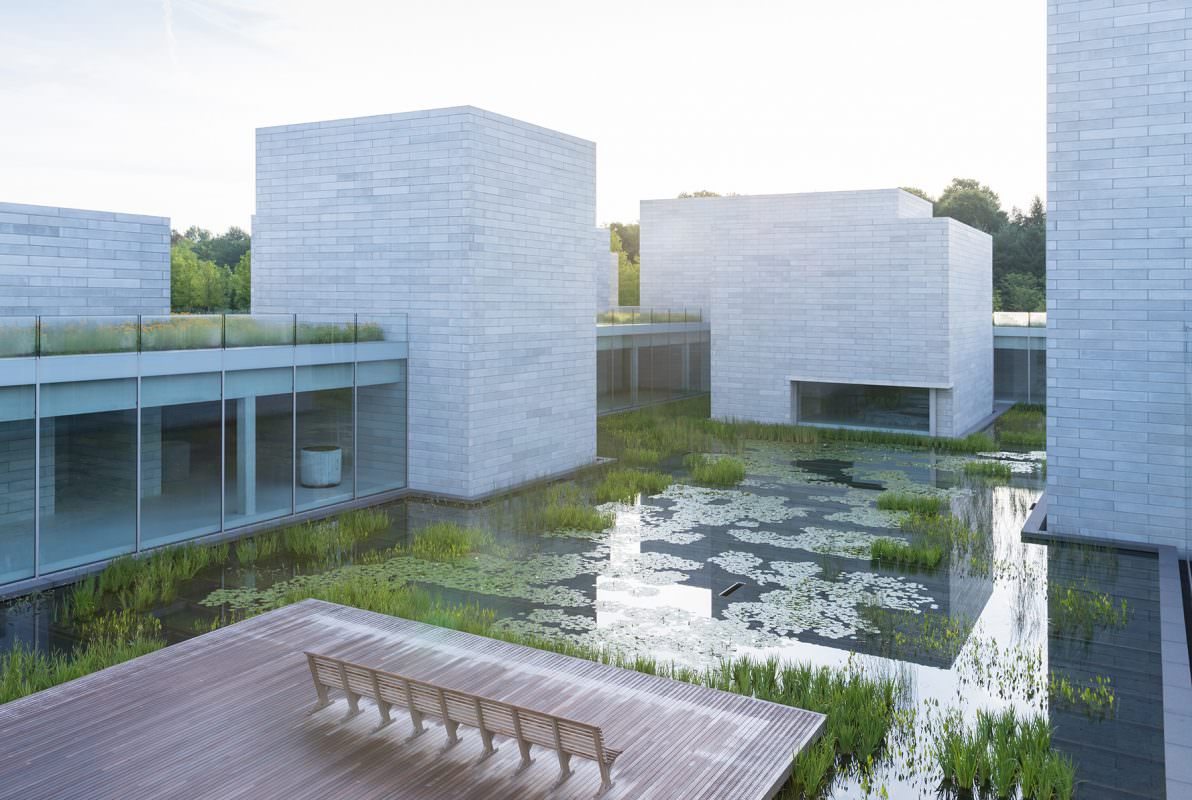
When: January 2023 - December 2023
Glenstone Museum, located just outside of Washington, DC in Potomac, Maryland has reopened. Glenstone is a place that seamlessly integrates art, architecture, and nature into a serene and contemplative environment. To plan your visit, visit their website .
Glenstone Museum is open Thursday-Sunday 10 a.m. – 5 p.m. Admission is always free.
THE 10 BEST Moscow Museums
Museums in moscow.
- Specialty Museums
- Art Galleries
- Art Museums
- History Museums
- Children's Museums
- Science Museums
- Military Museums
- Natural History Museums
- Observatories & Planetariums
- 5.0 of 5 bubbles
- 4.0 of 5 bubbles & up
- 3.0 of 5 bubbles & up
- 3rd Transport Ring (TTK)
- District Central (TsAO)
- Garden Ring
- Boulevard Ring
- Good for a Rainy Day
- Budget-friendly
- Good for Kids
- Good for Big Groups
- Hidden Gems
- Good for Couples
- Adventurous
- Honeymoon spot
- Good for Adrenaline Seekers
- Things to do ranked using Tripadvisor data including reviews, ratings, photos, and popularity.

1. State Tretyakov Gallery

2. Moscow Kremlin
3. Tsaritsyno Museum-Reserve

4. Armoury Chamber
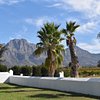
5. Kolomenskoye Historical and Architectural Museum and Reserve

6. The Museum of Cosmonautics

7. Kuskovo Estate

8. Pushkin State Museum of Fine Arts
9. New Tretyakov Gallery

10. State Darwin Museum
11. Diamond Fund (Almazny Fond)
12. Experimentanium Museum of Entertaining Sciences
13. Jewish Museum and Tolerance Center

14. Museum of Soviet Arcade Machines
15. Art Gallery of the European and American Countries of the XIX-XX centuries

16. Orlov Paleontological Museum
17. Muzeon Art Park
18. Mikhail Bulgakov State Museum
19. Moscow Planetarium
20. Historical Park Russia - My History
21. Entertainment Center Arbat 16
22. Bunker-42 Cold War Museum at Taganka
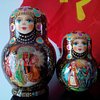
23. Museum-Diorama Tsar-Layout

24. The State A.S. Pushkin Museum
25. Museum Moskovskiy Transport

26. Victor Vasnetsov House Museum

27. Novospasskiy Monastery

28. Gorky's House (Ryabushinsky Mansion)
29. Artplay Design and Architecture Center

30. Borodino Battle Museum Panorama

What travelers are saying

- State Tretyakov Gallery
- Moscow Kremlin
- Tsaritsyno Museum-Reserve
- The Museum of Cosmonautics
- Armoury Chamber
- Museum-Diorama Tsar-Layout
- Victor Vasnetsov House Museum
- Museum Moskovskiy Transport
- Kolomenskoye Historical and Architectural Museum and Reserve
- Museum in the Dark Sensorium
- Art Gallery of the European and American Countries of the XIX-XX centuries
- Kuskovo Estate
- Muzeon Art Park
- Jewish Museum and Tolerance Center
- Orlov Paleontological Museum
- Novospasskiy Monastery
- Historical Park Russia - My History
- Experimentanium Museum of Entertaining Sciences
- Mikhail Bulgakov State Museum
- Museum of Soviet Arcade Machines
- Entertainment Center Arbat 16
- Bunker-42 Cold War Museum at Taganka
- Museum of Illusions
- Museum of Death
Faith Ringgold, artist who explored Black life and history, dies at 93
She made large-scale political paintings in the 1960s before crafting ornate ‘story quilts’ and acclaimed picture books such as ‘tar beach’.

Faith Ringgold, an artist, author and activist who charted a defiantly independent course through the American art world, protesting the exclusion of Black and female artists from major museums and crafting vibrant paintings, quilts and children’s books that explored African American life and history, died April 13 at her home in Englewood, N.J. She was 93.
Her assistant, Grace Matthews, confirmed the death but did not give a cause.
A protean and prolific artist who reinvented herself multiple times, Ms. Ringgold bucked trends and conventions throughout her six-decade career. She made figure paintings and politically incendiary work in an era when abstraction was in vogue; championed racial justice and feminism even when those causes put her at odds with curators; and pursued art forms that were often consigned to the domestic sphere, making playful and evocative “story quilts” that combined texts and images, serving as an extension of her paintings.
“The fact that I’m considered a minority on every count frees me to do what I want to do,” she told the New York Times in 1984 . “I believe in being an artist as a way of life; my intention is serious, and I’m ready to challenge anyone who says what I do isn’t.”
For years, Ms. Ringgold worked on the margins of the mainstream while also trying to reshape art-world institutions. Beginning in the late 1960s, she helped organize demonstrations against the Museum of Modern Art and the Whitney Museum of American Art in New York, calling for women and Black artists to be better represented in shows and collections.
She and her allies notched a few victories — after they staged demonstrations at the Whitney, placing tampons and uncooked eggs in galleries and stairwells, the museum’s annual sculpture show featured a greater number of women — although it would be almost 50 years before Ms. Ringgold received a flurry of late-in-life recognition for her own work, amid a wider reckoning with sexism and racial injustice.
Reviewing a 2021 retrospective of her work at the Glenstone museum in Potomac, Md., Washington Post art critic Philip Kennicott wrote that “Ringgold emerges not just as a powerful advocate for racial justice and the equality of women, but as a prophet. And seeing a cross-section of the 90-year-old artist’s career leaves one thrilled by something else as well: the cohesiveness and persistence of her ideas, impulses and gestures, which suggests a heroic sense of purpose, a mind dedicated to gathering things up, binding them together and making them legible to as wide an audience as possible.”
Ms. Ringgold was hardly known for provocative work at the outset of her career, when she supported herself with a job as a New York City public school teacher while painting landscapes. But after encountering the work of Black authors and activists such as James Baldwin and Amiri Baraka in the mid-1960s, she began tackling political subject matter in her “American People” series, which evoked the racial tensions and unrest of the era in large-scale works like “The Flag Is Bleeding.”
Completed in 1967, the canvas juxtaposed a blood-soaked American flag with the image of three figures linked arm in arm: a White man, a White woman and a Black man, who grips a knife with his left hand and holds his right hand over his heart, where blood oozes from his chest.
That same year, as race riots broke out in cities across the country, Ms. Ringgold finished another mural-sized painting in the “American People” series, “Die” (1967) , which showed a dozen blood-spattered Black and White figures dressed in suits and cocktail attire, fighting and collapsing on the sidewalk. “I was just trying to read the times,” she later said , “and to me everyone was falling down.”
Other paintings were more joyful and abstract. Ms. Ringgold ditched the color white and experimented with darker shades for portraits in her “Black Light” series, and dispensed with figurative shapes altogether in her kaleidoscopic 1980s series “Dah,” which she named after a nonsense word her baby granddaughter used to refer to the pictures.
During a visit to the Rijksmuseum in Amsterdam, Ms. Ringgold discovered a collection of thangkas, Tibetan Buddhist paintings made on cotton and silk. The pieces appealed to her in part because of their convenience — she could roll them up when they weren’t hung vertically on a wall — and launched her on a new phase of her career, inspiring her to make thangkas of her own and eventually to focus on quilts.
Collaborating with her mother, Willi Posey, Ms. Ringgold made her first painted quilt, “Echoes of Harlem,” in 1980, drawing on memories of her childhood in the New York City neighborhood. The quilt featured a tapestry of 30 faces, painted on cotton, and laid the groundwork for her story quilts, which were hung on gallery walls and combined elements of fiction and autobiography in lengthy blocks of text.
While her enslaved ancestors had once made quilts for plantation owners, Ms. Ringgold helped elevate the quilt into high art through playful and subversive works such as “Who’s Afraid of Aunt Jemima?” (1983), which reimagined the syrup brand mascot as an independent-minded entrepreneur instead of a racist archetype. Other quilts suggested an almost childlike sense of wonder and yearning, as in “Tar Beach” (1988), which told the story of a young girl named Cassie who passes the time on “tar beach,” the roof of her Harlem apartment building, where she dreams of taking flight and soaring above the city.
The quilt was inspired by Ms. Ringgold’s own childhood and led her to publish her first book, also called “Tar Beach” (1991). A runner-up for the Caldecott Medal for best American picture book, it launched Ms. Ringgold on a new career as an author and illustrator, leading to picture books about the Harlem Renaissance and Rosa Parks, among other subjects, even as she remained best known for “Tar Beach.”
By the book’s end, Cassie has soared above the George Washington Bridge near her home. Anyone can fly, she tells her brother: “All you need is somewhere to go you can’t get to any other way. The next thing you know, you’re flying above the stars.”
The youngest of three children, Faith Willi Jones was born in Harlem on Oct. 8, 1930. Her father, who left the family when she was young, drove a sanitation truck and was said to have scavenged her first easels while doing his rounds. Her mother was a seamstress and fashion designer.
Ms. Ringgold turned to art while struggling with asthma as a young child. She received early encouragement from neighbors in Sugar Hill, a popular area for Black artists, musicians and professionals, where she lived on the same block as saxophonist Sonny Rollins and was down the street from Duke Ellington and the tap-dancing Nicholas Brothers.
While studying art and education at the City College of New York, she married Robert Earl Wallace, a pianist, in 1950. They had two children, separated after four years and later divorced. In 1962, she married Burdette “Birdie” Ringgold, who worked at an automobile plant in New Jersey.
Ms. Ringgold received a bachelor’s degree in 1955, followed by a master’s in art from City College in 1959. She held her first New York solo show at Spectrum Gallery in 1967 and received early encouragement from the gallery’s director, Robert Newman, who offered up the venue’s vacant space during the summer for her to focus on her large-scale works.
Within a few years, Ms. Ringgold had broadened her advocacy to feminist and antiwar issues. She was briefly jailed in 1970, when she helped organize an exhibition of flag art, designed to test a New York state law prohibiting the desecration of the American flag. With allies that included her daughter Michele Wallace, an author and cultural critic, she also co-founded a short-lived advocacy group, the National Black Feminist Organization.
In addition to Michele, survivors include another daughter, Barbara Wallace; three granddaughters; and three great-grandsons. Her husband died in 2020.
After working as a public art teacher for nearly 20 years, Ms. Ringgold joined the University of California at San Diego in 1984, where she was an art professor until her retirement from teaching in 2002. She was still working in recent years, and was delighted by the belated recognition for her work, especially the more political paintings from the 1960s, which viewers seemed to lose interest in after the decade ended.
“There are very many artists who just want to paint colors. That’s fine. I couldn’t do that,” she told NPR in 2013 , discussing the role that activism and advocacy played in her work. “I have something else I want to make my story about. And I need the freedom to do that.”
A previous version of this obituary incorrectly said that a retrospective of Faith Ringgold’s work was held at the Glenstone museum in 2019. It was held in 2021. The article has been corrected.


IMAGES
VIDEO
COMMENTS
Getting Here. Glenstone is located at 12100 Glen Road. From downtown D.C., travel takes 30-45 minutes without traffic. From downtown Baltimore, travel takes 60 minutes without traffic. Route 301 on the Ride On bus stops at Glenstone Museum. Click here for route information and timetables. Glen Road is a busy road shared by drivers, cyclists ...
The museum is open Thursday through Sunday from 10 a.m. to 5 p.m. Glenstone asks that its guests reserve a visit in advance online . Visits can be scheduled on the half hour from 10 a.m. to 3 p.m. Tickets are released on the first of every month for the next three months (for example, December tickets will be available on Oct. 1).
Glenstone Museum. 235 reviews. #2 of 19 things to do in Potomac. Speciality Museums. Closed now. 10:00 AM - 5:00 PM. Write a review. About. Guided by the personal vision of its founders, Glenstone assembles post-World War II artworks of the highest quality that trace the greatest historical shifts in the way we experience and understand art of ...
An Expanded Glenstone Will Open to the Public on October 4, Offering a Six-Fold Increase in Exhibition Space and Another 130 Acres of Landscape. POTOMAC, MD, September 4, 2018 - Reservations to visit the new Glenstone Museum are now available and can be booked online by visiting glenstonestag.wpengine.com. Admission is free at all times.
Glenstone Admission + Gallery Building, Iconoclasts Exhibition. Glenstone Museum is open year-round Thursday-Sunday from 10 am to 5 pm, but on Fridays and Saturdays from May 4 through September 28, we will be open until 8:00 pm. We are closed on Thanksgiving, Christmas, and New Year's Day. Due to the fragile nature of the works on view, all ...
But the most breathtaking thing about Glenstone, the very reason you should want to visit, is the quiet. Embodying a burgeoning museum movement toward "slow art," Glenstone will let in just ...
Glenstone, a museum of modern and contemporary art, is integrated into nearly 300 acres of gently rolling pasture and unspoiled woodland in Montgomery County, Maryland, less than 15 miles from the heart of Washington, DC. Established by the not-for-profit Glenstone Foundation, the museum opened in 2006 and provides a contemplative, intimate ...
Glenstone Museum is open year-round Thursday-Sunday from 10 am to 5 pm, but on Fridays and Saturdays from May 4 through September 28, we will be open until 8:00 pm. ... For questions regarding group visits, please email [email protected] or call our main line at 301-983-5001. We look forward to welcoming you to Glenstone!
Glenstone Museum is open Thursday-Sunday 10 a.m. - 5 p.m. Admission is always free and visitors must schedule visits through our website. Due to the fragile nature of the works on view, all visitors must be 12 or older and all minors must be accompanied by an adult at all times. While most visits must be scheduled in advance, students 12 and ...
In this post, I will guide you through my visit to the museum along with some of my favorite photos. Tips for Planning Your Visit. Glenstone is located in Potomac, Maryland, just a short drive from Washington, D.C. Admission to the museum is free, but advance reservations are required. The museum is open from Thursday to Sunday.
Glenstone Museum was established in 2006 on three fundamental elements: art, architecture and landscape. We pursue artworks of the highest quality from post-World War II artists and display theme in a serene and contemplative environment. The museum is set on a 230-acre former foxhunting estate and includes exhibition space designed by the late architect Charles Gwathmey and outdoor sculpture ...
The museum is open Thursday through Sunday from 10 a.m. to 5 p.m. Glenstone asks that its guests reserve a visit in advance online . Visits can be scheduled on the half hour from 10 a.m. to 3 p.m. Tickets are released on the first of every month for the next three months (for example, December tickets will be available on Oct. 1).
Contemporary art museum contains about 1,300 works in many mediums from post-World War II artists around the world, which is noted for its distinctive setting in a broad natural landscape. Glenstone Museum | VisitMaryland.org
Glenstone Museum, located just outside of Washington, DC in Potomac, Maryland has reopened. Glenstone is a place that seamlessly integrates art, architecture, and nature into a serene and contemplative environment. To plan your visit, visit theirwebsite. Glenstone Museum is open Thursday-Sunday 10 a.m. - 5 p.m. Admission is always free.
Details. We've gotten a few hard-to-come-by tickets for a group visit to Glenstone Museum for Sunday, April 28! Please note the Pavilions are closed for renovations but the Gallery and grounds are open. We'll meet by the ticket counter at Glenstone and will start our visit promptly at 12 PM. If you're running late, just look for us on the grounds.
22. Entertainment Center Arbat 16. We decided to visit the Maze of Fear (18+), the Mirror Maze (18+ on New Arbat, 0+ on Old Arbat), The Museum of... 23. Bunker-42 Cold War Museum at Taganka. ... which you need to get the history of the bunker from WWII/Great Patriotic War period to the more recent history. 24.
Reviewing a 2021 retrospective of her work at the Glenstone museum in Potomac, ... During a visit to the Rijksmuseum in Amsterdam, Ms. Ringgold discovered a collection of thangkas, Tibetan ...
The museum was founded by the PJSC "City" in conjunction with the Museum of Moscow. Open to the public since July 2017. You can visit the museum on your own or order an English-speaking guide in advance. The price starts at 3 500 rubles for a group up to 20 people. Please call +7 495 775 36 56 for more information.
The idea of a grand museum dedicated to Lenin was outlined in the early 1970s, but it took 15 years to be completed. One of its goals was to recapture public attention to Lenin as a historical figure.
Historically, a boyars' and then Tsar's residence on the Izmailovo Island, now part of the expanded museum-reserve. Plan your visit. Museum-Reserve. Telegram. Kolomenskoe. 39 Prospekt Andropova 115487 Moscow, Russian Federation. Park area: daily 5:30-22:00. The opening hours of the exhibitions are indicated on the exposition pages (Monday ...